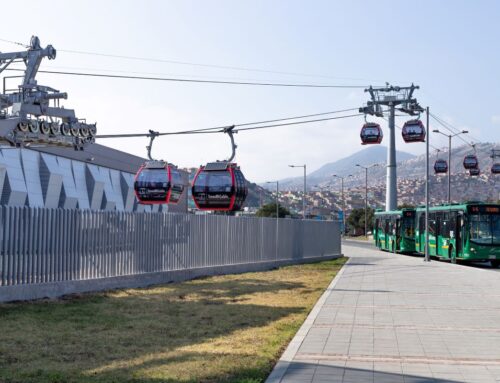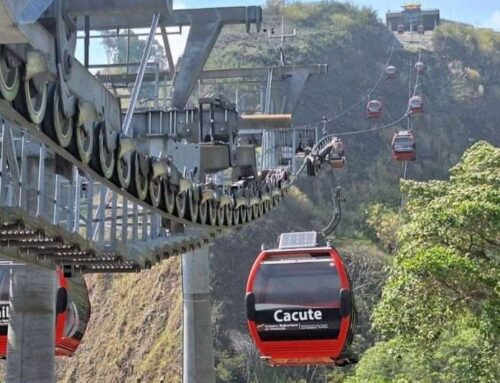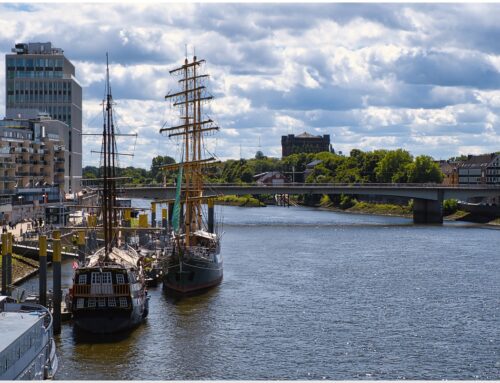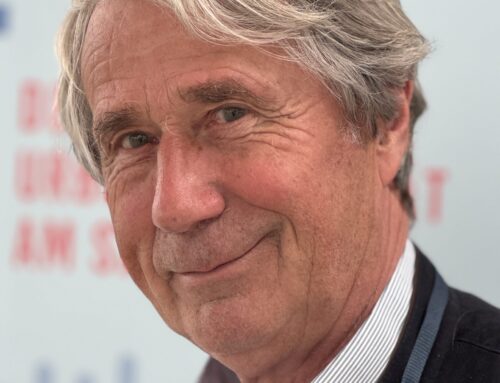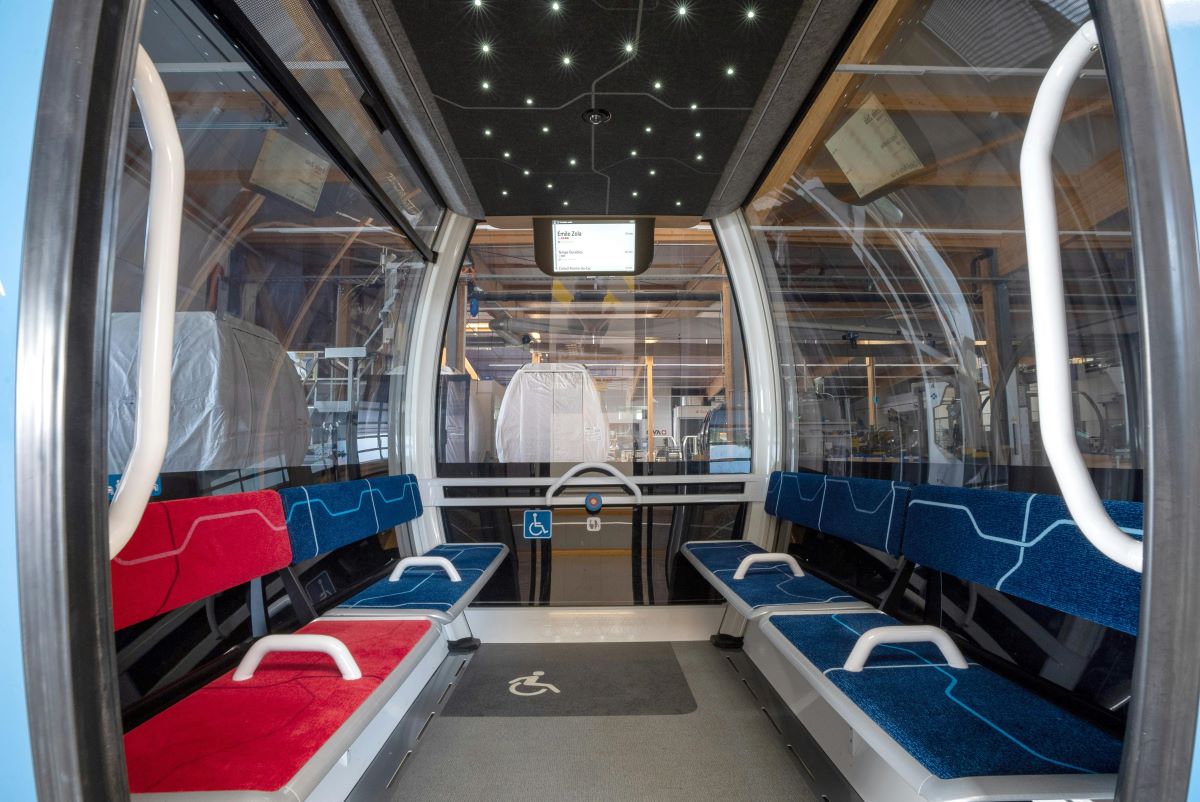
Cities, SI Urban 1/2025
Câble C1 in Paris: Cable car on the home stretch
New Mobility for 20,000 Residents: The DOPPELMAYR Câble C1 cable car is the answer to a long-standing mobility challenge in the southern part of Paris. It will expand the public transportation network of the Île-de-France region and provide better connections to several Parisian suburbs in the Val-de-Marne department.
The cable car improves accessibility to the Paris metro network and relieves internal traffic congestion. The 4.5-kilometer route includes five stations, connecting the city of Créteil with the municipalities of Limeil-Brévannes, Valenton, and Villeneuve-Saint-Georges.
A total of three years of construction time were planned to connect the four municipalities with an investment of 138 million euros. This is cheaper than a tram line and allows for a time savings of up to 18 minutes per trip.
The route layout of Câble C1:
The 4.5-kilometer route includes five stations.
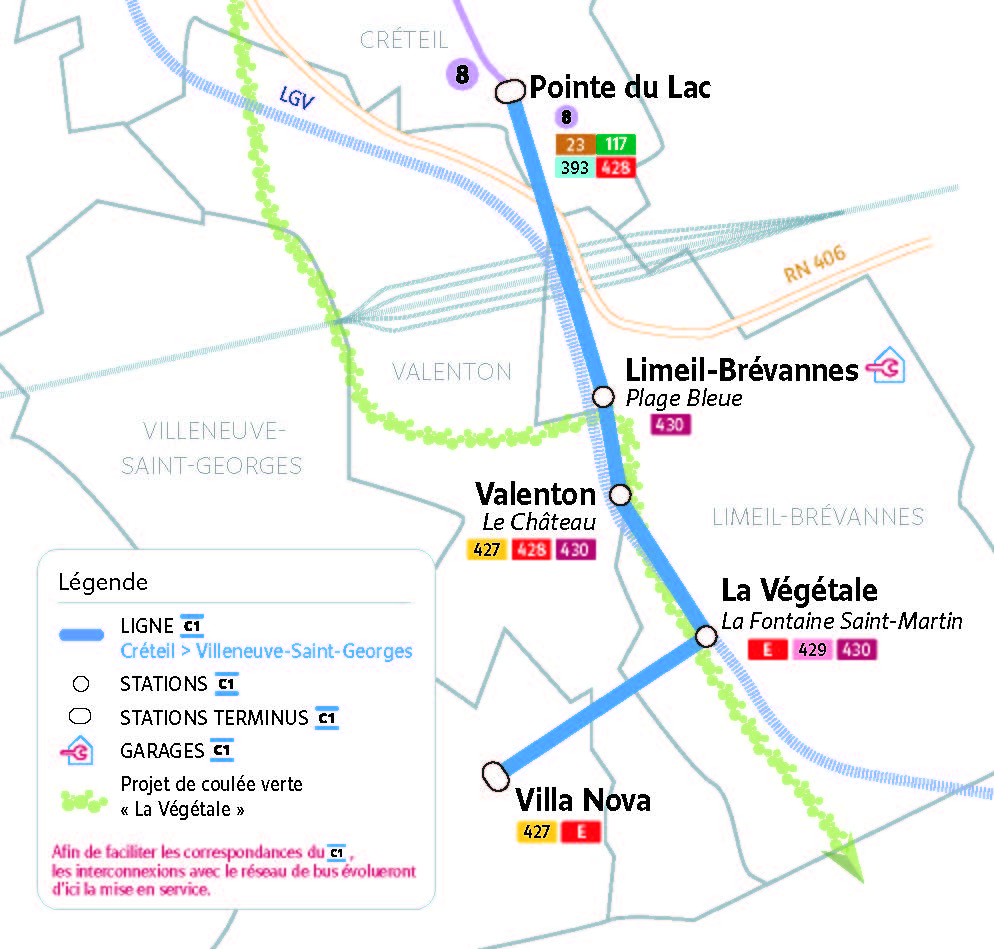
Project 2025 nears completion
The support structures, cable car technology, and cable are mostly already installed, and the cable splicing has been completed. The 105 cabins have been delivered, with some already test-hung. The electrical commissioning will take place starting in May. Section by section, the system will be made operational.
After that, the final checks will take place from September, with the cable car system scheduled to open at the end of 2025.
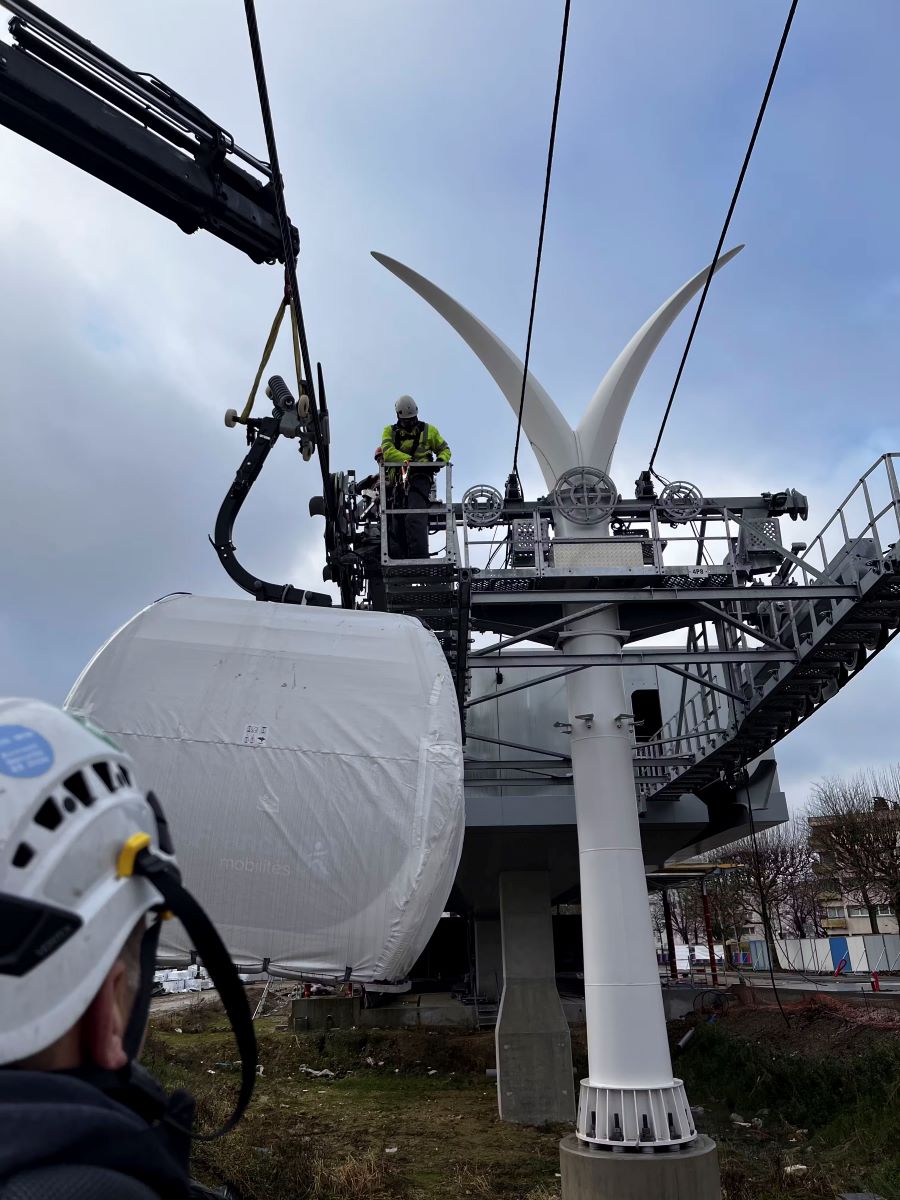
The construction process is in full swing:
The cabins from CWA have already been test-hung.
Stations as mobility hubs
The construction of the five stations is also progressing. At Pointe du Lac, a multimodal hub is being created, providing a direct transfer to the subway. The Limeil-Brévannes intermediate station will function as the operational center for the cable car line, offering maintenance facilities, cleaning stations, and parking for the cabins. It will also give a new impulse to the “Temps Durables” neighborhood.
The second intermediate station, Valenton, will be built on a hill, providing access to the surrounding residential area. The third intermediate station, La Végétale, will be an anchor station to connect the cable car towards Villa Nova, where the terminus will be located.
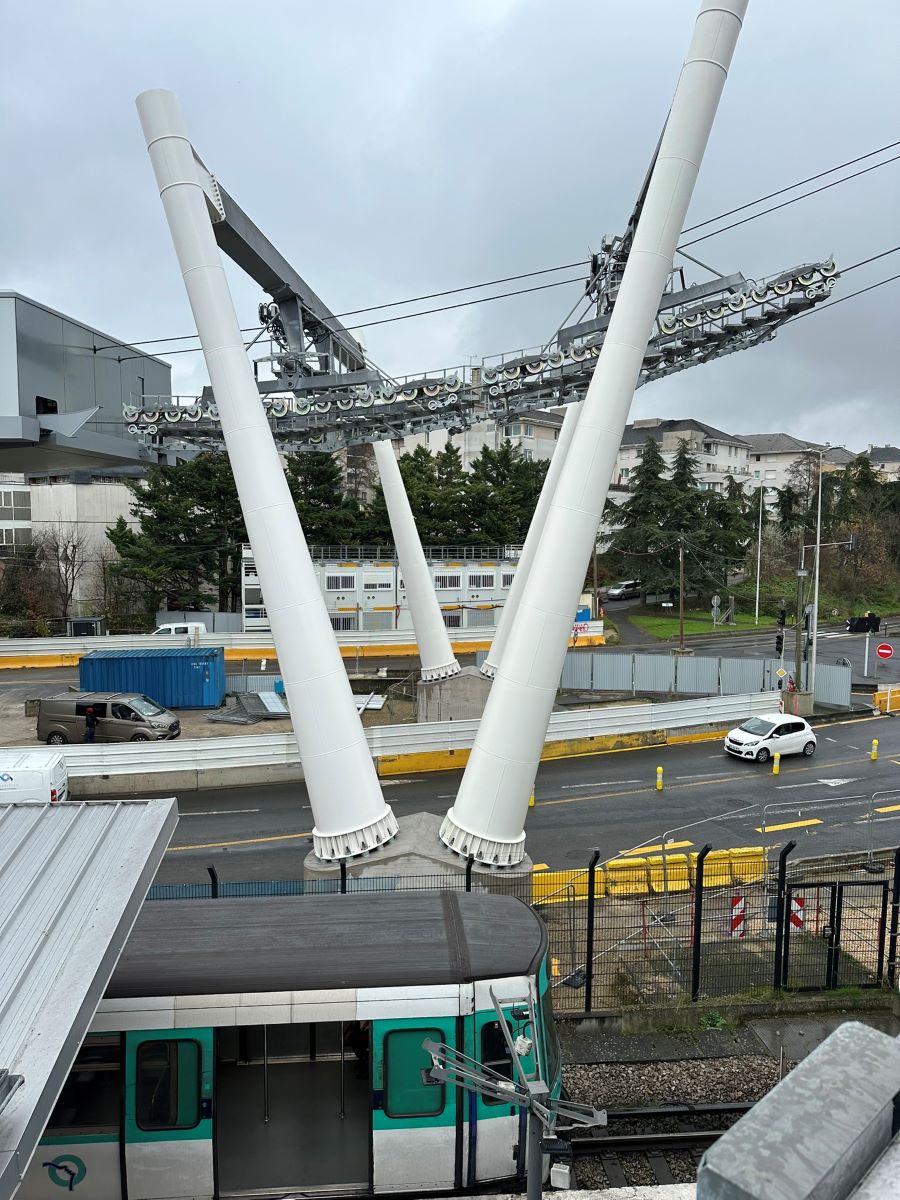
Flexible construction solutions
allow for the continued existence of infrastructure and road traffic.
All five stations have been planned with minimal space requirements and footprints, with a low contribution to land sealing, ensuring they blend into the surrounding area. They are designed to seamlessly integrate into the existing landscape, with green roofs included. All stations also offer bike parking and restroom facilities.
A fully accessible design, from sidewalks, bus stops, and adjacent infrastructure to the cabins and back, is particularly noteworthy. This ensures inclusion and accessibility for public transportation.
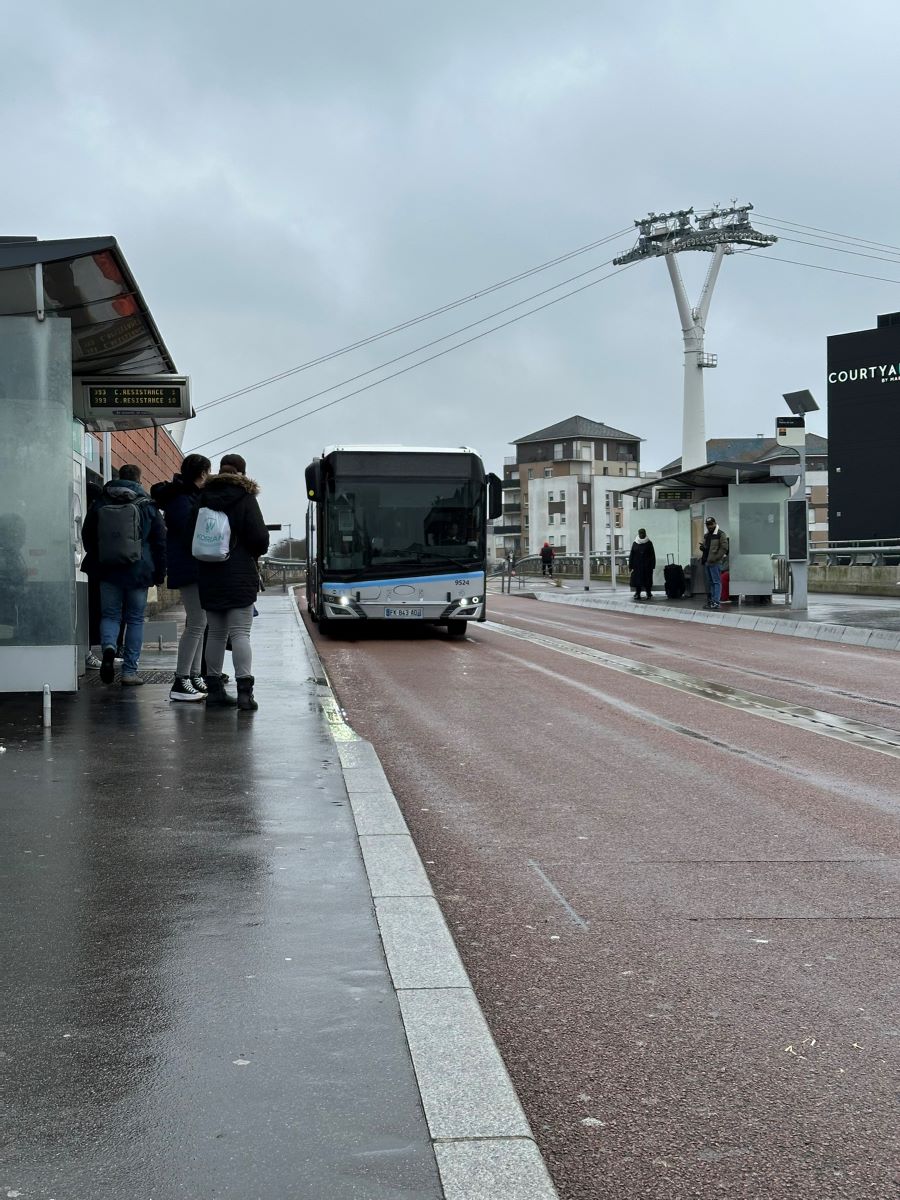
The local bus network
will be adjusted to the cable car line by the time the cable car becomes operational.
Integration into the green corridor
The station surroundings and the new infrastructure for bus connections, bike, and pedestrian pathways will be adapted and integrated into a unified design. Plazas and green spaces will visually enhance the stations. The route between Limeil-Brévannes and La Végétale will create new connections and shorten
travel times. It will also be protected as a “green corridor”: supports, stations, and paths will blend into the landscape.
From the concept phase (since 2014), planners ensured that as many trees as possible would be preserved. Now, over 500 new trees are being planted, and 200 young trees will further enhance the quality of the green belt. The “green corridor” will serve as a recreational space for local residents, promoting access to
nature and providing cyclists with fast connections through the new pathways.
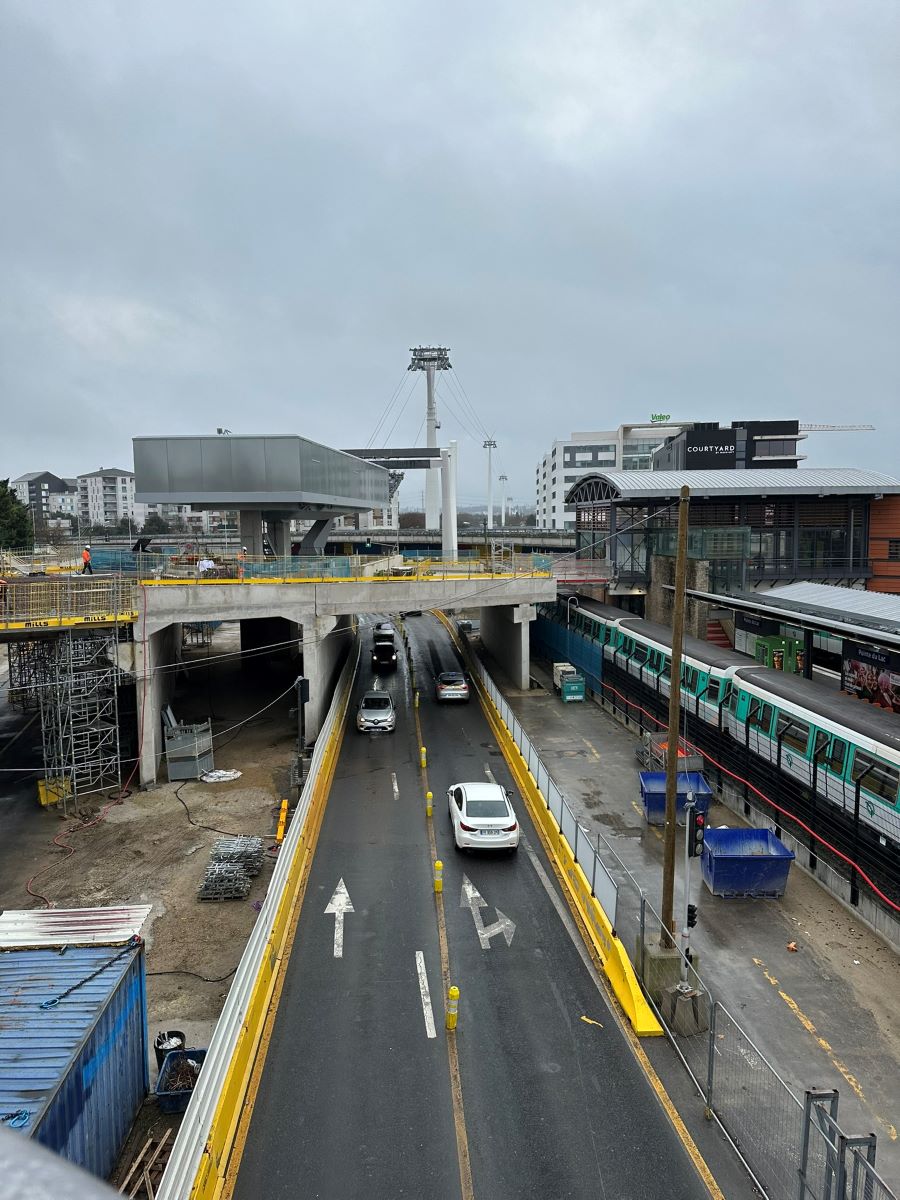
The cable car will be integrated into the mobility concept of the city:
The stations will be integrated as mobility hubs into the surrounding area, with seamless transfers to buses and the subway.
Bus lines being reshaped
As early as March 2025, the urban transport operator Ile-de-France Mobilités began reorganizing bus services to integrate the cable car optimally into the multimodal mobility concept. To reduce travel times, existing bus lines will be adjusted, their frequencies modified, new lines will be created, and new stops will be added.
Fully integrated into the public transport system, the cable car will be used just like the metro and buses, with a single ticket for all journeys.
Technical Data
Câble C1 Paris
| Length: | 4,5 km |
| Stations: | 5 |
| Travel speed: | 6 m/s |
| Travel time (total distance): | ca. 18 min |
| Number of cabins: | 105 |
| Cabin capacity: | 10 p |
| Capacity: | 1.600 p/h |
| Number of stations: | 5 |
| Number of towers: | 30 |
